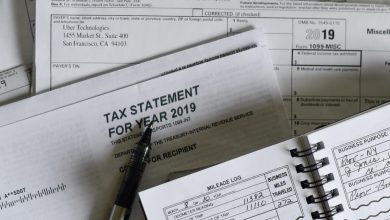Top 7 Strategies to Protect Your Income from Taxes

Sometimes nothing is more depressing than seeing how much of your paycheck is going to taxes each year. But there are many ways to keep more of your income and lower your overall tax liability. It goes without saying that you should always pay every penny that you owe to the government, but you should never pay more than you have to. Below we’ll go over the top seven strategies to protect your income from taxes.
1. Retirement Accounts
The first strategy to put into place when you want to protect your income from taxes is to set up a tax-deferred retirement account. The most popular of these include a 401(k), an IRA, or a Roth IRA.
In 2020, you can contribute up to $6,000 to a traditional IRA, or a Roth IRA, or $7,000 if you’re at least 50 years old. In a traditional IRA, the contribution is tax-free, as the tax is deferred until retirement. A traditional IRA works most effectively if you believe you will be in a lower tax bracket in retirement. With a Roth IRA, you can withdraw your money tax-free when you retire. A Roth IRA works best if you believe you will be in a higher tax bracket during retirement.

2. Open a Health Savings Account
Opening an HSA (Health Savings Account) is a great way to reduce your tax liability if you have a high-deductible health plan. An HSA allows you to set aside money each year that you estimate you’ll have to use for medical expenses. The HSA then lets you use nontaxable dollars to cover your out of pocket expenses for the year.
In 2020, the limit for depositing into a health savings account went up by $50. The maximum you can contribute now is $3,550 for an individual or $7,100 for a family.
Families can also receive tax credits to help with paying for college. The American Opportunity Tax Credit has only been around since 2009 and provides qualifying families with up to $2,500 for higher education. Qualifying students can receive 100% of the first $2,000 they spend on materials for school and a credit for 25% of the next $2,000 they spend (0.25 x $2,000 = $500).
3. IRS Tax Credits
The IRS offers multiple tax credits that you may be able to take advantage of. The Earned Income Tax Credit ranges from $529 as an individual to $6,557 for a parent of three kids. Some people may believe they don’t qualify for this credit, but it does not apply to only low-income families. Many people considered “middle class” can receive this credit if they lost a job, took a pay cut, or worked fewer hours during the year. As many as 25% of people who qualified for this tax credit do not claim it.
Another way to save your income from taxes is the Child Tax Credit. If you have dependents under 17 years old, you qualify for the Child Tax Credit. The credit can vary from year to year, but in 2020, the credit is $2,000 per child.
The last IRS tax opportunity you may be able to take advantage of is the Retirement Savings Contributions Credit, also known as the Saver’s Credit. To be eligible for this credit, you must be 18 or older, not a full-time student, and not claimed as a dependent on another return. The total of the credit depends on your adjusted gross income. The amount of the credit could be 50%, 20%, or 10% of the total contributions made to a retirement plan.

4. Open a College Savings Account
A college savings account, officially known as a 529 plan, allows for multiple tax benefits. Any interest earned from this account is tax-free when being used for educational purposes, and qualified withdrawals are not subject to federal taxes.
Each state has different rules governing their 529 plans, with some offering further tax deductions. Pennsylvania, for example, allows you to deduct up to $30,000 worth of contributions for a married couple, or $15,000 for individuals.
5. Capital Gains Protection
When you invest money, it should be for the long haul. And if you’re holding onto your stocks and mutual funds, you receive advantageous treatment for taxes on long-term capital gains. As long as you hold onto your investment for more than one year, the tax rate on your capital gains when you sell an asset is 0%, 15%, or 20% depending on how much money you make. A married couple making less than a combined $78,750 owes 0% on their capital gains.
Also, when you sell a house, you do not have to pay capital gains up to $250,000 as an individual or up to $500,000 as a married couple.
6. Buy a Home

One of the benefits of buying a house rather than renting is that several tax deductions become available to you. When you own real estate, your real estate taxes, mortgage insurance premiums, and mortgage interest are all tax-deductible. Also, you can deduct any sales paid on your purchase if you buy a modular or manufactured home or on building materials for new construction.
Buying a home does come with many added expenses that renters do not have to pay. But eventually, you will own your home outright and have a tremendous asset on your hands, rather than a bunch of moving boxes. And as we went over above, when you sell your home, you do not have to pay capital gains on the sale up to $250,000 as an individual or up to $500,000 if you’re married.
7. Municipal Bonds
Municipal bonds are attractive to investors due to deferred tax-free interest payments. An example of buying a municipal bond is when you lend money to a state which will pay out a set amount of interest payments over a specified period.
Municipal bonds are exempt from federal taxes. Check your local state laws to see if municipal bonds are exempt from local taxes as well.



